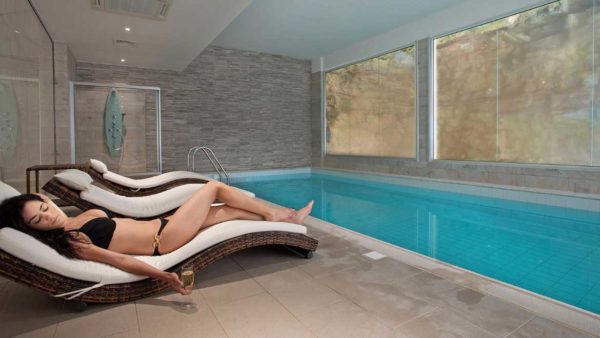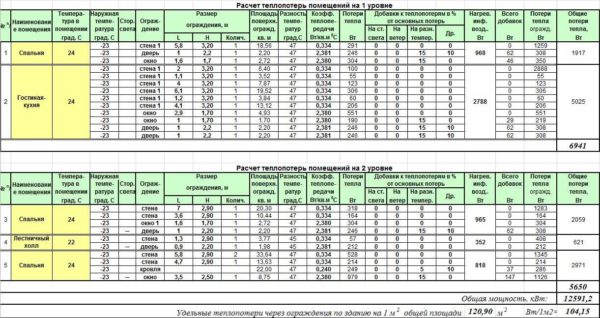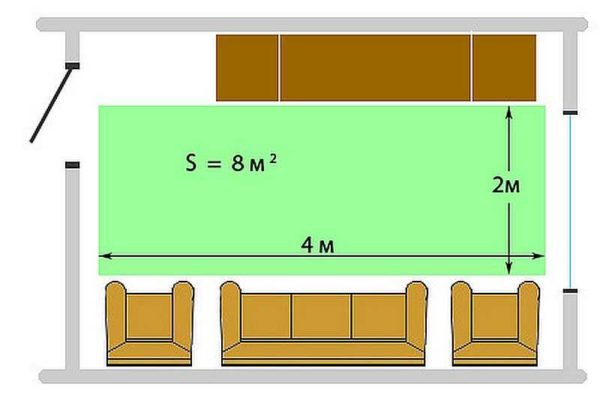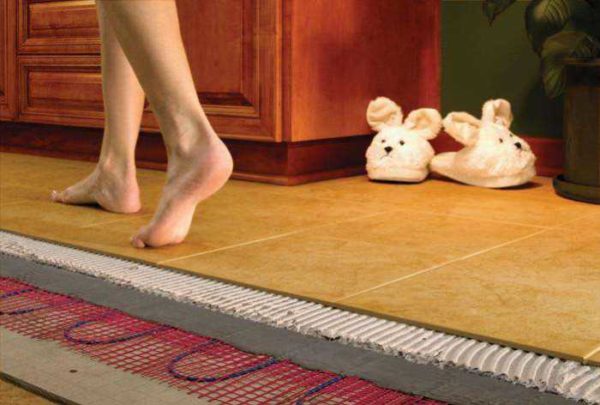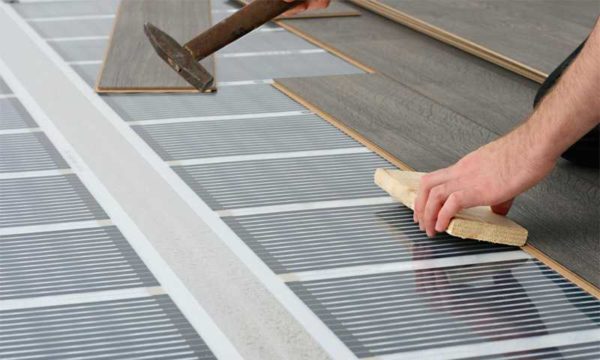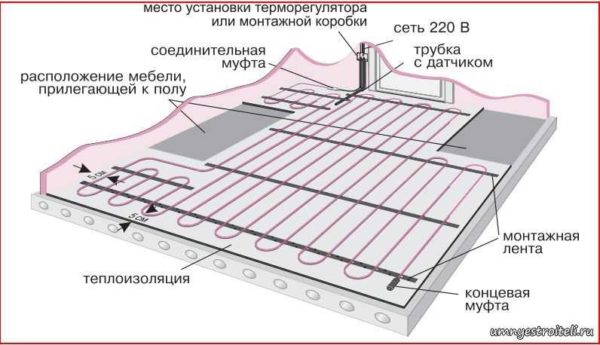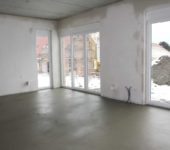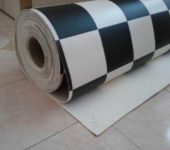How to calculate electric floor heating
Underfloor heating is becoming more commonplace in our homes. The floor is heated using water heating, laying pipes in a screed, or electricity - various heating elements that convert electricity into heat. It is far from always possible to make a warm water floor - in old apartments it is unrealistic to get permission for it. With electric heating it is easier - you can find an option even for old floors, which gives a minimum load. But in order for the house to be warm, it is imperative to first calculate the electric floor heating. Then the consumption for the arrangement will be optimal, and the power is sufficient even for the coldest periods.
The content of the article
Calculation methods
First of all, you need to decide whether you will have a warm floor as the main heating (without radiators and other heat sources) or additional (to increase comfort). Depending on this, the calculation of the electric underfloor heating changes. If floor heating is only additional heating, the only requirement is that there is enough power to heat the floor to a comfortable 28.5-29 ° C. There are no other requirements. In this situation, boldly use the average figures, which are determined empirically (in the table below). When using underfloor heating as the main heating, the approach is different: there must be enough heat to compensate for heat loss. Here everything is somewhat more complicated - calculations are needed.
Calculation of an electric underfloor heating for heat loss
There are two ways to calculate electric floor heating. The first is precisely the calculation. When using this technique, the heat loss of the room is first determined. This takes into account the region in which the building is located, the material and thickness of the walls, the thickness and type of insulation, the size of the windows and the type of glazing, the presence and area of the walls facing the street, the orientation of the room (to the south, north, etc.). All these factors affect the amount of heat that leaves the room and which will have to be replenished.
Heat loss for each type of building material can be found in special literature, there are separate methods. Such a calculation is a chore, but it allows you to get accurate data. This is in case you want to count yourself. If not, you can order a heat engineering calculation from specialists. And, if the areas for floor heating are planned to be large, it is still better to order. Sometimes, independently determined heat losses are several times higher than those that specialists will give you. And excess power is wasted money.
The resulting figure will be the power of the electric floor heating, which is necessary to compensate for the heat loss of this room. The whole calculation of an electric underfloor heating is to select heating elements in such an amount and of such a power that they give out the required amount of heat in total (it is possible with a small margin). If these are heating cables, it will be necessary to develop a laying scheme so that the entire required length of the cable is located on a given area. If you decide to use a film warm floor, you need to look for a film of the required power. In any case, keep in mind that in order not to feel cold and hot places of heating with your feet, the distance between adjacent heating elements should not be more than 30 cm.And for normal redistribution of heat (not in stripes), the minimum height of the screed should be 3 cm, better about 5 cm.
Note! An electric underfloor heating is laid only on the area that is not occupied by furniture and large household appliances. This is due to the fact that most of the heating elements of a warm floor do not tolerate overheating (except for a self-regulating heating cable). Therefore, the calculation of an electric floor heating begins with the location of furniture and equipment on the plan of the room (to scale). Having determined the area not occupied by the situation, you can proceed to the calculation. Another important point: if a warm floor is the main source of heat, then the heated surface should not be less than 70% of the total area of the room.
Determination of the required power depending on the purpose of the room
The second way is to count according to the average data. The amount of materials used in the construction of residential buildings is limited. This made it possible to derive the average figures for the required underfloor heating capacities for heating premises for various purposes. (see table).
| Heating type | name of the property | Required power |
|---|---|---|
| Additional heating | Kitchen, living rooms on the ground floor | 140-150 W / m2 |
| Additional heating | Kitchen, living rooms on the second floor and above | 120-130 W / m2 |
| Additional heating | Bathroom | 140-150 W / m2 |
| Additional heating | Balcony, loggia | 180 W / M2 |
| Primary heating | All premises, regardless of purpose | 180 W / M2 |
When calculating an electric floor heating, the found unoccupied area is multiplied by the rate taken from the table. Get the figure that an electric floor heating can give out. In principle, this will also be the maximum power consumption required for floor heating.
For example, if 10 squares will be heated in a living room on the ground floor, then 140 W / m2 * 10 m2 = 1400 W. can issue / consume a heating element. This is the power consumption per hour. Don't be scared. In reality, such a consumption can be only immediately after switching on and until the floor reaches the set temperature. During this period of time, the heaters work constantly. Then the heating is switched on / off by the thermostat, which maintains the set temperature with an accuracy of 1 ° C. The amount of electricity consumed during this period depends on the weather (the colder, the more often it will turn on) and the degree of insulation of the floor and the room as a whole.
What can affect heat dissipation
How well the floor heating will work is influenced not only by the power of the heating elements, but also by how correctly the whole "pie" is designed and made, how the materials are correctly selected.
Coating
First of all, the heat transfer is affected by the coating, which is laid over the heating elements. For example, if a resistive or self-regulating cable, mats from it or a rod infrared floor are used for heating, they are most often poured into a screed. In this case, special mixtures are used for warm floors. Another option is to add additives to a standard cement-sand mortar that increase the thermal conductivity of concrete. The second option is cheaper, but you have to look for information on the necessary supplements. But you can save money.
Then ceramic tiles are laid on the screed - in the bathroom, in the corridor, in the kitchen. In living rooms, laminate, linoleum, carpet are often used.
Regardless of what kind of flooring you plan to purchase, you should use only those materials that are intended for installation on a warm floor. They have increased thermal conductivity, they normally tolerate prolonged heating. So the increased price is justified, and the heating will be more efficient.
The most unsuccessful choice of finishing coat for a warm floor is carpet.Even special, it conducts heat worse than all others. In order to heat it up to an acceptable 28-29 ° C, it is necessary to raise the temperature of the heating elements by 4-5 ° C more than with other types of finishes.
The most successful choice is ceramic tiles or porcelain stoneware. They have good thermal conductivity, but they also have a high heat capacity - it takes a long time for them to warm up. Laying tiles and underfloor heating should be on special glue.
When using heating cables (any) or core floor heating, the laying technology is the same. First, the screed is poured, the concrete gains strength for 28 days, then the tiles are laid. When using heating cable mats, the process changes, and significantly: the tiles can be laid directly on top of the mats on the required adhesive layer. In this case, the consumption of glue is large (the minimum layer of tiles + glue is 3 cm), but much less time is required.
Film underfloor heating can be done without screed. It is placed under the laminate. Only a special underlay (for a warm floor) is laid on top of the film and laminate can be laid. Under linoleum or the same carpet, they make a rigid base - they put sheets of plywood, Chipboard or OSB (OSB), and already the topcoat is laid on them. Such an electric underfloor heating device - without a screed - is possible only if there is a radiator heating. Everything is packed quickly, but the heating is ineffective - no means can achieve high heat transfer.
Thermal insulation
The better the floor insulation under the electric heaters, the less electricity will be required to maintain normal temperatures. If the floor was already sufficiently insulated during construction, the insulation may not be installed. Although any system - cable or film floor you install - indicates the need to use a heat-insulating substrate. They are different in different systems, but their presence is desirable. Then, when calculating the electric underfloor heating according to average statistical data, you can take the required power along the lower edge or even slightly lower. And this is the money saved both during the device and during operation (less heat is spent on inappropriate heating).
A little about the heat-insulating materials that are recommended for use when installing a warm floor. The most optimal is extruded polystyrene foam (EPS). It has sufficient density and strength to withstand the pressure of the screed and everything that will be on it. The second option is high density sprayed insulation. The method is even better, but even more expensive. The density under the screed requires a high 60-80 kg / cubic meter, and such sprayed thermal insulation is even more expensive than EPS. True, it has the best characteristics for today (thermal conductivity is almost like that of air 0.2-0.3, depending on the manufacturer).
Often, when laying an electric floor heating, it is advised to use thermal insulation with a foil surface. This is argued by the fact that the foil reflects heat rays into the room. This is how it works, but if there is an air gap between the heater and the foil (at least 3 cm). There is no underfloor heating in the cake and there cannot be any air spaces. So stacking this stuff is just a waste of money and time. There is one more argument against laying a layer of foil under a warm floor. Foil in concrete crumbles to dust after a few weeks and becomes completely useless. They cannot even redistribute heat more evenly in this state.
Thermostats and sensors
The electric underfloor heating scheme assumes the presence of a thermostat and a temperature sensor. They are not required - you can manually turn the heaters on and off.But only together with these devices will the system work normally, for a long time, provide the required level of comfort, efficiently use electricity, and avoid overheating. The presence or absence of a thermostat with a sensor does not affect the calculation of an electric underfloor heating, but it has a very strong effect on the service life. As already mentioned, the vast majority of heating elements are afraid of overheating, and it is very difficult to avoid it with manual control. A couple of times you do not have time to turn it off in time, the cables / film / mats will melt.

